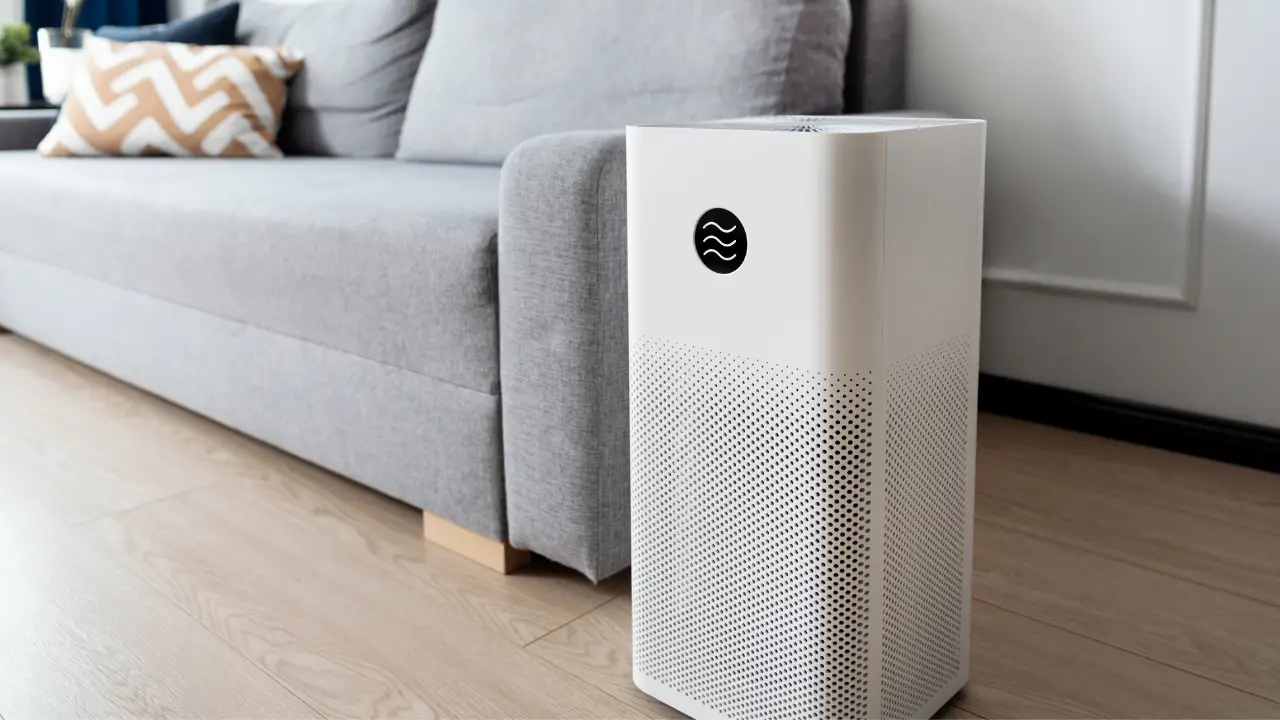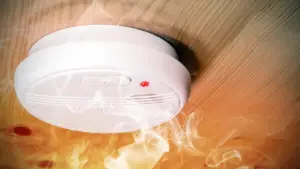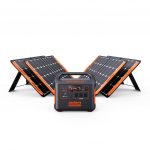Air purifiers are highly effective devices that can significantly reduce the amount of dust particles in the air we breathe. They work by utilizing filters, such as HEPA filters, to trap dust and other small particles, ensuring clean air is released back into the room. By reducing the concentration of dust in the air, air purifiers can provide several benefits, including minimizing symptoms for people with respiratory conditions like asthma, reducing the risk of cardiovascular diseases, and improving sleep quality.
It is important to note, however, that air purifiers may not completely eliminate all dust particles, especially those that have settled on surfaces or are trapped in carpets and bedding. Complementary measures, such as regular vacuuming and cleaning, may be necessary for effective dust reduction in the home.
Table of Contents
Key Takeaways on how do air purifiers help with dust
- Air purifiers effectively filter out dust particles and other contaminants in the air.
- They use filters, such as HEPA filters, to trap dust and release clean air back into the room.
- Air purifiers can minimize symptoms for individuals with respiratory conditions and improve sleep quality.
- They may not completely eliminate all settled dust particles on surfaces or trapped in carpets and bedding.
- Regular vacuuming and cleaning are important complementary measures for effective dust reduction.
Understanding the Benefits of Air Purifiers for Dust Removal
Air purifiers offer a multitude of benefits when it comes to removing dust from the indoor air, making them an essential addition to any home or office space. These devices work by filtering out airborne particles and contaminants, effectively reducing the concentration of dust in the air. This can have several positive effects on our health and well-being.
One of the main benefits of air purifiers is their ability to improve indoor air quality. Dust particles, along with other allergens and pollutants, can lead to respiratory problems and allergies. By capturing and trapping dust particles in their filters, air purifiers help to create a cleaner and healthier living environment. This can be especially beneficial for individuals with respiratory conditions like asthma, as reducing dust in the air can minimize symptoms and improve overall respiratory health.
In addition to respiratory benefits, air purifiers can also contribute to a reduction in the risk of cardiovascular diseases. Fine particles, including dust, can enter our bloodstream and cause inflammation, which can lead to heart problems. By removing dust from the air, air purifiers can help maintain a healthier cardiovascular system and reduce the risk of heart-related issues.
Moreover, air purifiers can also improve sleep quality. Dust particles in the air can irritate the respiratory system, causing coughing, sneezing, and congestion, all of which can disrupt sleep. By removing dust and other allergens from the air, air purifiers create a cleaner and more conducive sleeping environment, allowing for a more restful and rejuvenating sleep.
| Benefit | Explanation |
|---|---|
| Improved Indoor Air Quality | Air purifiers remove dust particles and other pollutants, creating a cleaner living environment. |
| Reduced Respiratory Symptoms | By capturing dust, air purifiers can minimize symptoms for individuals with respiratory conditions like asthma. |
| Lower Risk of Cardiovascular Diseases | Removing dust particles from the air can reduce inflammation and decrease the risk of heart-related issues. |
| Improved Sleep Quality | Cleaner air free from dust can lead to a more restful sleep without respiratory disturbances. |
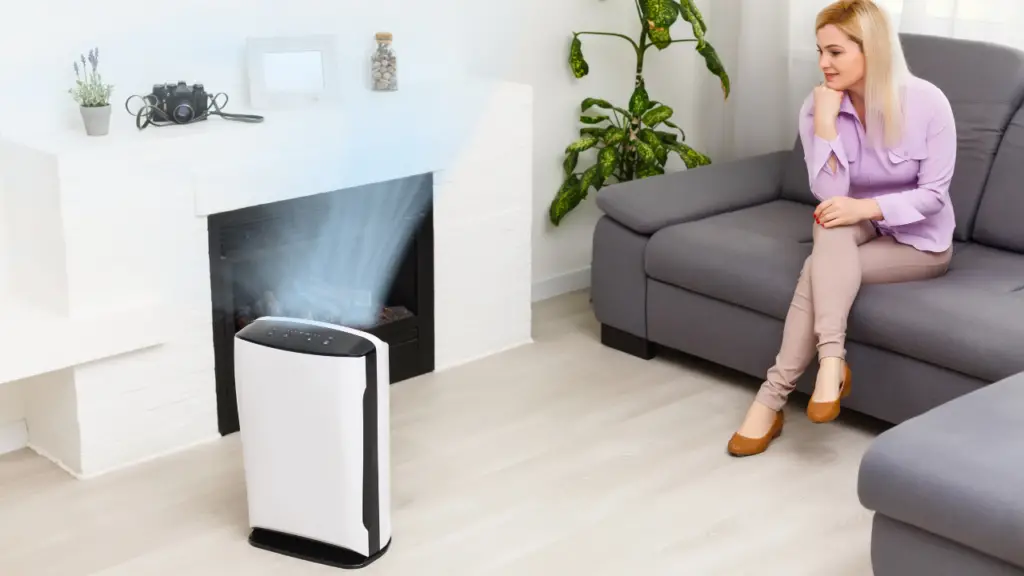
The role of HEPA filters in dust removal
HEPA filters play a crucial role in the dust removal process of air purifiers, ensuring that the air we breathe is free from harmful particles.
HEPA, which stands for High Efficiency Particulate Air, is a type of filter designed to capture and retain small particles, including dust, pollen, pet dander, and other airborne allergens. These filters are made up of densely packed fibers that create a fine mesh, allowing air to pass through while capturing particles as small as 0.3 microns in size.
When the air is drawn into the air purifier, it passes through the HEPA filter. As the air moves through the filter, the fibers trap and retain the dust particles, preventing them from being released back into the room. This process ensures that the air expelled from the air purifier is clean and free from harmful contaminants.
Table: Benefits of HEPA filters in air purifiers
| Benefits | Description |
|---|---|
| High efficiency | HEPA filters can capture up to 99.97% of particles, ensuring effective dust removal. |
| Allergy relief | By removing dust and allergens from the air, HEPA filters can help alleviate allergy symptoms. |
| Cleaner air | The use of HEPA filters results in cleaner indoor air, promoting a healthier living environment. |
“HEPA filters are essential components of air purifiers, providing an extra layer of protection against dust and other harmful particles. Their high efficiency and ability to capture even the smallest particles make them a reliable choice for improving air quality and reducing dust-related allergies.”
While HEPA filters are highly effective in capturing airborne dust particles, it’s important to note that they may not eliminate settled dust on surfaces or trapped in carpets and bedding. Regular cleaning and vacuuming are still necessary to address these areas of concern. By combining the use of air purifiers with good cleaning practices, you can create a more dust-free environment and enjoy cleaner, healthier air in your home.
Choosing the Best Air Purifiers for Dust
With numerous options available in the market, it is essential to choose an air purifier that is specifically designed to effectively combat dust particles and improve indoor air quality. When selecting an air purifier for dust removal, there are several factors to consider:
- Filter Type: Look for air purifiers with HEPA filters, as they are highly effective at capturing small dust particles, pollen, pet dander, and other allergens.
- Room Size: Consider the square footage of the room where the air purifier will be used. Ensure that the purifier’s coverage area matches or exceeds the room size for optimal performance.
- Noise Levels: Take into account the noise levels produced by the air purifier. If you plan to use it in a bedroom or office, opt for models with lower noise output for a peaceful environment.
- Additional Features: Some air purifiers come with additional features like air quality sensors, adjustable fan speeds, and programmable timers. These features can enhance convenience and customization.
It’s also advisable to read reviews and compare different brands and models to find the best air purifier for your specific needs. Remember that while air purifiers can effectively reduce airborne dust particles, they may not tackle settled dust on surfaces or in carpets and bedding. Regular cleaning and dusting practices should be combined with the use of air purifiers for comprehensive dust reduction.
Table: Recommended Air Purifiers for Dust Removal
| Brand | Model | Filter Type | Coverage Area | Noise Level |
|---|---|---|---|---|
| 1 | XYZ | HEPA | Up to 500 sq. ft. | 25 dB |
| 2 | ABC | HEPA + Activated Carbon | Up to 700 sq. ft. | 32 dB |
| 3 | PQR | HEPA + UV-C | Up to 300 sq. ft. | 28 dB |
By considering these factors and using the recommended air purifiers for dust removal, you can create a cleaner and healthier living environment, free from the discomfort and health risks associated with excessive dust.
Addressing Dust Allergies with Air Purifiers
Air purifiers can be a game-changer for individuals suffering from dust allergies, providing relief and creating a safe haven from irritants. These devices work by filtering out airborne particles, including dust, pollen, pet dander, and dust mites, which are common triggers for allergy symptoms. By capturing these allergens in specialized filters, such as HEPA filters, air purifiers help reduce the amount of dust circulating in the air, thus minimizing the risk of allergic reactions.
One of the key benefits of using air purifiers for dust allergies is their ability to create a cleaner and healthier indoor environment. By removing allergens from the air, air purifiers can significantly improve air quality, making it easier for allergy sufferers to breathe and reducing the frequency and severity of symptoms like sneezing, coughing, and wheezing.
It’s important to note that air purifiers are not a cure-all for dust allergies, as they may not be able to completely eliminate settled dust on surfaces or trapped in carpets and bedding. However, when used in conjunction with regular cleaning and dusting routines, air purifiers can be an effective tool in reducing overall allergen exposure and creating a more comfortable living environment for those with dust allergies.
| Benefits of Air Purifiers for Dust Allergies |
|---|
| Reduces airborne dust particles and allergens |
| Improves air quality and breathing for allergy sufferers |
| Minimizes allergy symptoms like sneezing and coughing |
| Creates a cleaner and healthier living environment |
Enhancing dust control with air purifiers
Air purifiers act as powerful allies in the battle against dust, working hand in hand with regular cleaning practices to keep indoor spaces dust-free. These devices utilize advanced filtration systems, such as HEPA filters, to effectively capture and trap dust particles, pollen, pet dander, and other airborne allergens. By continuously circulating and purifying the air, air purifiers significantly reduce the concentration of dust in the environment, leading to improved air quality and a healthier living space.
One of the key advantages of using air purifiers for dust control is their ability to target even the smallest dust particles. HEPA filters, which are commonly used in high-quality air purifiers, are designed to capture particles as small as 0.3 microns with 99.97% efficiency. This means that even the tiniest dust mites, mold spores, and pollen grains can be effectively removed from the air, providing relief for allergy sufferers and promoting better respiratory health.
In addition to their dust-trapping capabilities, air purifiers also help to eliminate unpleasant odors and volatile organic compounds (VOCs) that may contribute to indoor air pollution. These devices contain activated carbon filters that absorb and neutralize odors, ensuring a fresh and clean environment. Furthermore, some air purifiers feature smart sensors that detect and respond to changes in air quality, automatically adjusting their purification settings to provide optimal dust control.
| Advantages of Air Purifiers for Dust Control |
|---|
| Effective removal of dust particles, pollen, pet dander, and other allergens |
| Improved air quality and respiratory health |
| Elimination of unpleasant odors and VOCs |
| Smart sensor technology for automatic purification adjustments |
While air purifiers are highly effective at reducing airborne dust particles, it’s important to note that they may not completely eliminate settled dust on surfaces or debris trapped in carpets and bedding. Therefore, it’s recommended to complement air purifiers with regular cleaning routines, such as vacuuming, dusting, and washing bedding and curtains, to achieve comprehensive dust control in the home.
In conclusion, air purifiers are valuable tools in the fight against dust, providing a cleaner and healthier indoor environment. By utilizing advanced filtration systems and targeting even the smallest particles, these devices enhance dust control and contribute to better respiratory health. However, it’s important to remember that air purifiers should be used in conjunction with regular cleaning practices to achieve optimal dust reduction.
Mitigating dust with air purifiers
Air purifiers offer a proactive solution for dust mitigation, ensuring that the air remains clean and free from dust particles. These devices work by filtering out airborne contaminants, including dust mites, pollen, and pet dander. By using filters like HEPA filters, air purifiers trap these tiny particles, preventing them from recirculating in the air. As a result, the concentration of dust in the room is reduced, creating a healthier and more comfortable living environment.
One of the key benefits of air purifiers in dust mitigation is their ability to minimize respiratory symptoms for individuals with conditions like asthma or allergies. By removing dust particles from the air, air purifiers can help alleviate coughing, sneezing, and wheezing, enabling sufferers to breathe easier. Additionally, cleaner indoor air can contribute to better sleep quality, as dust and allergens are reduced, leading to a more peaceful and restful night’s sleep.
While air purifiers are effective in reducing airborne dust particles, it’s important to note that they may not eliminate settled dust on surfaces or in carpets and bedding. To achieve comprehensive dust reduction, it is recommended to supplement the use of air purifiers with regular cleaning and dusting routines. Vacuuming carpets, dusting surfaces, and washing bedding on a regular basis can help to remove dust that has settled, ensuring a clean and dust-free living space.
| Key benefits of air purifiers for dust mitigation: |
|---|
| Reduced respiratory symptoms for asthma and allergy sufferers |
| Better sleep quality due to reduced dust and allergens |
| Improved overall air quality |
| Enhanced comfort and well-being in indoor spaces |
In conclusion, air purifiers play a crucial role in dust mitigation by filtering out airborne particles and contaminants. They provide a proactive solution for maintaining clean and dust-free indoor air, which can have a positive impact on respiratory health, sleep quality, and overall well-being. While air purifiers may not eliminate all sources of dust, they are an effective tool when used in conjunction with regular cleaning practices. By incorporating air purifiers into your home or office, you can create a healthier living environment and enjoy the benefits of cleaner air.
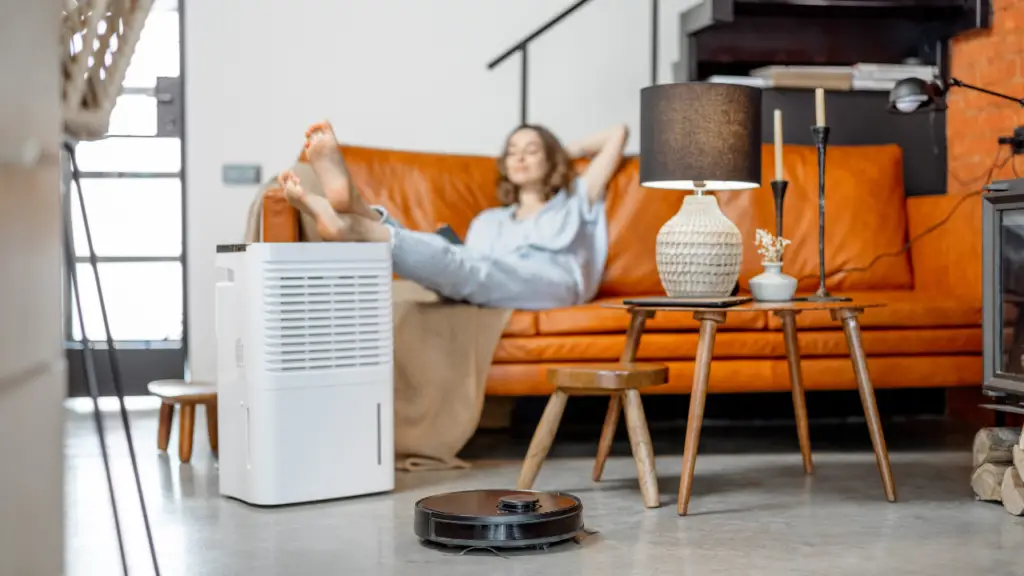
Uncovering the secret to clean indoor air with air purifiers
Air purifiers hold the key to clean indoor air, providing a breath of fresh air by eliminating dust and creating a healthier living environment. These devices are designed to filter out airborne particles and contaminants, including dust, before releasing clean and purified air back into the room. With their powerful filters, such as HEPA filters, air purifiers can effectively trap even the tiniest dust particles, ensuring that you breathe in cleaner and purer air.
By reducing the concentration of dust in the air, air purifiers can offer several benefits. For individuals with respiratory conditions like asthma or allergies, air purifiers can help minimize symptoms and improve overall respiratory health. In addition, cleaner indoor air can contribute to a reduced risk of cardiovascular diseases and promote better sleep quality. With an air purifier quietly working in the background, you can breathe easier and enjoy a more comfortable and restful environment.
While air purifiers are highly effective at reducing airborne dust particles, it’s important to note their limitations. They may not be able to completely eliminate settled dust on surfaces or dust that is trapped in carpets and bedding. For comprehensive dust reduction, it is recommended to supplement the use of air purifiers with regular cleaning, dusting, and vacuuming. By combining these measures, you can create a truly dust-free and healthier living space for you and your loved ones.
| Air Purifier Benefits: |
|---|
| Improved respiratory health |
| Reduced risk of cardiovascular diseases |
| Better sleep quality |
| Minimized allergy symptoms |
To summarize, air purifiers play a vital role in achieving clean indoor air by removing dust and other contaminants from the environment. While they may not eliminate all dust particles, they can significantly reduce dust concentrations in the air, promoting a healthier and more comfortable living space. Remember to complement air purifier usage with regular cleaning practices to effectively minimize dust on surfaces and in other hard-to-reach areas. With air purifiers and proper cleaning routines, you can enjoy cleaner air and a healthier lifestyle.
Exploring the limitations of air purifiers in dust removal
While air purifiers are highly effective at reducing airborne dust particles, it’s important to understand their limitations in completely eliminating dust from all surfaces. Air purifiers work by filtering out dust and other contaminants in the air, trapping them in filters before releasing clean air back into the room. This can significantly reduce the concentration of dust in the air, which can be beneficial for individuals with respiratory conditions like asthma and allergies.
However, air purifiers may not be able to remove dust that has settled on surfaces or is trapped in carpets and bedding. These particles are not airborne and therefore may not be captured by the filters in air purifiers. To effectively reduce dust in the home, it’s important to implement additional measures, such as regular vacuuming, dusting, and cleaning.
In addition to their limitations in removing settled dust, air purifiers may also have some limitations in terms of room coverage. Some air purifiers are designed for specific room sizes, and using an air purifier that is too small for a larger room may not effectively reduce dust particles. It’s important to consider the square footage of the room when selecting an air purifier to ensure optimal performance.
| Pros | Cons |
|---|---|
| Effectively reduces airborne dust particles | May not eliminate settled dust on surfaces |
| Improves air quality and respiratory health | May have limitations in room coverage |
| Reduces allergy symptoms | Requires regular maintenance and filter replacement |
To maximize the effectiveness of air purifiers in reducing dust, it’s recommended to follow a comprehensive approach that combines the use of air purifiers with regular cleaning practices. Vacuuming carpets and upholstery regularly, dusting surfaces and washing bedding regularly can all help to minimize dust buildup in the home. This holistic approach can create a cleaner and healthier living environment, reducing the overall dust levels and improving indoor air quality.
Supplementing air purifiers with additional dust reduction measures
To achieve optimal dust reduction, it is recommended to complement the use of air purifiers with regular cleaning practices, such as vacuuming and dusting. While air purifiers are effective at filtering out airborne particles, they may not be able to eliminate settled dust on surfaces or dust trapped in carpets and bedding. By incorporating these additional measures, you can significantly reduce dust levels in your home and create a cleaner and healthier living environment.
Regular vacuuming
Vacuuming is an essential step in controlling dust. Be sure to use a vacuum cleaner equipped with a high-efficiency particulate air (HEPA) filter, as it can effectively capture dust particles and prevent them from being released back into the air. Focus on vacuuming carpets, rugs, upholstery, and hard-to-reach areas where dust tends to accumulate. Don’t forget to vacuum regularly, at least once or twice a week, to maintain dust-free surfaces.
Dusting surfaces
Dusting is another crucial aspect of dust reduction. Use a microfiber cloth or electrostatic duster to trap dust particles instead of simply spreading them around. Start from the top and work your way down, ensuring you reach all surfaces, including furniture, shelves, windowsills, and electronics. Additionally, consider using a slightly damp cloth to prevent dust from becoming airborne again.
Minimizing clutter
Clutter can attract and trap dust, making it harder to keep your living space dust-free. Regularly declutter your home by organizing and tidying up. Keep surfaces clear of unnecessary items and ensure everything has its designated place. By minimizing clutter, you create fewer spaces for dust to accumulate, making it easier to maintain a dust-free environment.
| Dust Reduction Measures: | Effectiveness: |
|---|---|
| Vacuuming with HEPA filter | Highly effective in capturing dust particles |
| Regular dusting with microfiber cloth | Efficient in trapping and removing dust |
| Minimizing clutter | Reduces spaces for dust accumulation |
Remember, while air purifiers play a significant role in reducing airborne dust particles, combining their use with regular cleaning practices can yield the best results. By incorporating vacuuming, dusting, and minimizing clutter into your cleaning routine, you can significantly reduce dust levels and create a cleaner and healthier living environment for you and your family.
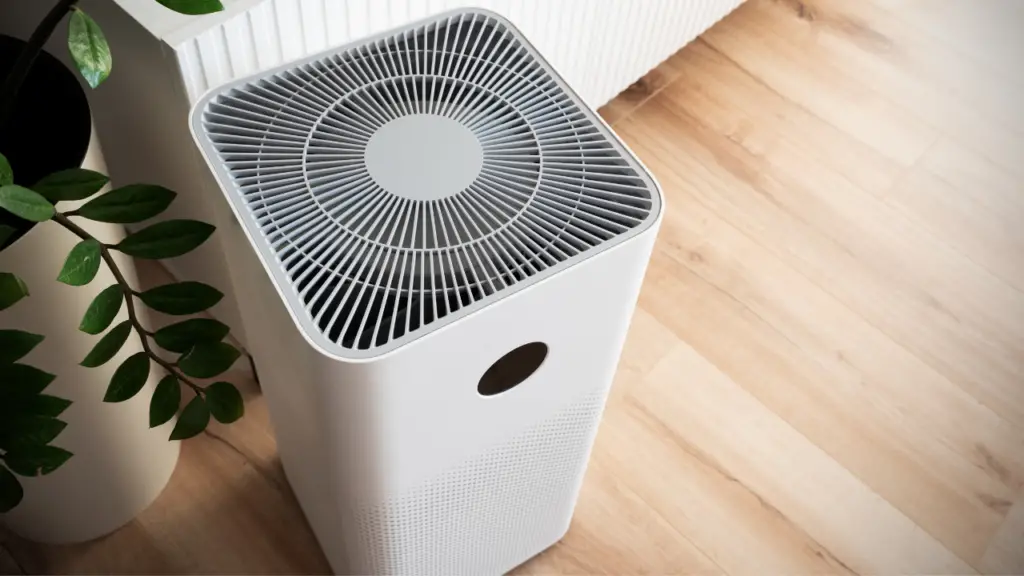
Promoting a Healthier Living Environment with Air Purifiers
Air purifiers offer more than just dust reduction – they significantly contribute to a healthier living environment by improving indoor air quality and enhancing overall well-being. These innovative devices are designed to filter out airborne particles, including dust, allergens, pet dander, and even harmful pollutants, providing cleaner and fresher air to breathe.
By effectively removing dust particles from the air, air purifiers can help reduce respiratory symptoms for individuals with conditions such as asthma or allergies. The presence of dust in the air can aggravate these conditions, leading to coughing, sneezing, and difficulty breathing. With the use of air purifiers, the concentration of dust in the air is minimized, providing relief and creating a more comfortable living environment.
| BENEFITS OF AIR PURIFIERS FOR A HEALTHIER LIVING ENVIRONMENT |
|---|
|
“Clean air is not just something we need to survive; it is something we need to thrive.”
In addition to reducing respiratory symptoms, air purifiers also contribute to a healthier living environment by reducing the risk of cardiovascular diseases. Dust and other airborne pollutants can enter the bloodstream through the respiratory system, causing inflammation and potentially leading to heart problems. By removing these particles from the air, air purifiers help maintain a cleaner and healthier environment, reducing the risk of cardiovascular issues over time.
Furthermore, air purifiers can improve sleep quality by providing a cleaner and more comfortable environment. Dust particles in the air can disrupt sleep, leading to nighttime allergies, coughing, and discomfort. With the use of air purifiers, the air is cleared of these particles, allowing for a more restful and rejuvenating sleep experience.
Creating a Healthy Sanctuary
Investing in an air purifier is a smart step towards creating a healthy sanctuary within your home. By promoting cleaner indoor air, air purifiers can help minimize respiratory symptoms, reduce the risk of cardiovascular diseases, and enhance sleep quality. Remember that while air purifiers are highly effective at reducing airborne dust particles, they may not eliminate settled dust on surfaces or trapped in carpets and bedding. To achieve comprehensive dust reduction, it’s important to incorporate regular cleaning routines, vacuuming, and dusting in conjunction with air purifier usage.
With the right air purifier and a commitment to maintaining a clean and dust-free environment, you can enjoy the many benefits of improved indoor air quality and achieve a healthier living environment for you and your loved ones.
Conclusion
Investing in an air purifier specifically designed for dust removal can make a significant difference in the air quality of your indoor spaces, improving your overall health and well-being. Air purifiers are highly effective at filtering out airborne particles and contaminants, including dust, through the use of filters like HEPA filters. By trapping dust and other small particles, air purifiers can reduce the concentration of dust in the air, which can have numerous benefits for your respiratory health.
For individuals with respiratory conditions like asthma, air purifiers can help minimize symptoms by removing allergens and irritants from the air. By reducing the amount of dust and other airborne particles, air purifiers can also lower the risk of cardiovascular diseases and improve sleep quality. Breathing clean, pure air can have a positive impact on your overall well-being.
However, it’s important to note that air purifiers may not be able to completely eliminate all dust particles, especially those that have settled on surfaces or are trapped in carpets and bedding. To effectively reduce dust in your home, it’s recommended to complement air purifiers with other measures like regular vacuuming, dusting, and cleaning. These additional steps can help remove settled dust and prevent it from circulating in the air.
By combining the use of air purifiers with proper cleaning and maintenance, you can create a healthier living environment by reducing dust and improving the overall air quality of your indoor spaces. Breathe easier and enjoy a cleaner, dust-free home with the help of an air purifier designed to tackle dust and other airborne particles.
FAQ
Q: How do air purifiers help with dust?
A: Air purifiers help with dust by filtering out airborne particles and contaminants in the air. They use filters, such as HEPA filters, to trap dust and other small particles before releasing clean air back into the room.
Q: What are the benefits of using air purifiers for dust removal?
A: Using air purifiers for dust removal can improve air quality, reduce allergy symptoms, and create a cleaner and healthier living environment.
Q: What is the role of HEPA filters in dust removal?
A: HEPA filters in air purifiers are highly effective at capturing even the smallest dust particles, helping to remove them from the air.
Q: How do I choose the best air purifier for dust?
A: When selecting an air purifier specifically for dust removal, consider factors such as room size, filter types, noise levels, and additional features to find the best option for your needs.
Q: Can air purifiers help with dust allergies?
A: Yes, air purifiers can help alleviate dust allergies by eliminating airborne allergens, including dust mites, pet dander, and pollen.
Q: How can air purifiers enhance dust control?
A: Air purifiers work alongside regular cleaning routines to minimize dust accumulation and maintain a cleaner environment.
Q: Can air purifiers effectively mitigate dust in indoor spaces?
A: Air purifiers are effective at reducing dust in homes, offices, and other indoor spaces, promoting long-term dust reduction.
Q: How do air purifiers contribute to a clean indoor air environment?
A: Air purifiers remove dust and other contaminants from the air, improving overall air quality and promoting a healthier living environment.
Q: What are the limitations of air purifiers in dust removal?
A: While air purifiers are effective at reducing airborne dust particles, they may not eliminate settled dust on surfaces or trapped in carpets and bedding.
Q: How can I supplement air purifiers for further dust reduction?
A: Alongside air purifiers, regular cleaning, vacuuming, and dusting can be additional measures to reduce dust in indoor spaces.
Q: How do air purifiers promote a healthier living environment?
A: Air purifiers contribute to a healthier living environment by improving respiratory health, reducing the risk of cardiovascular diseases, and enhancing sleep quality.

